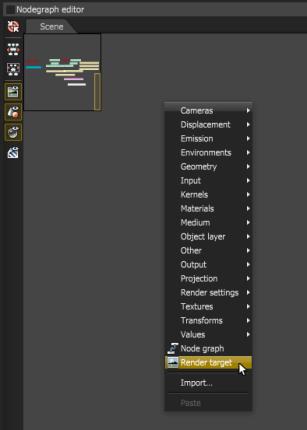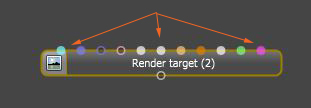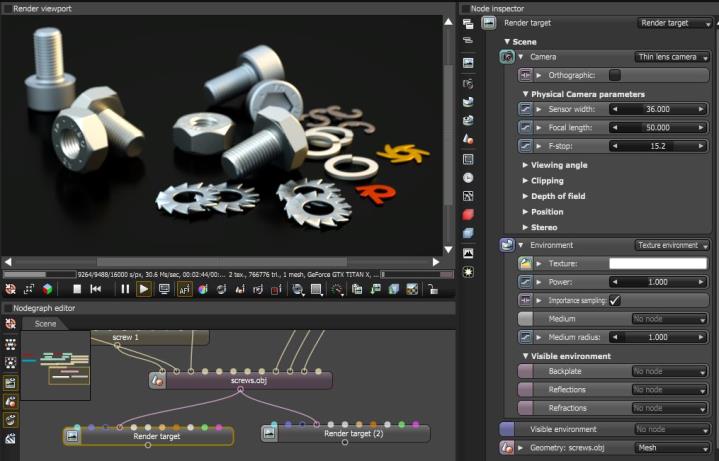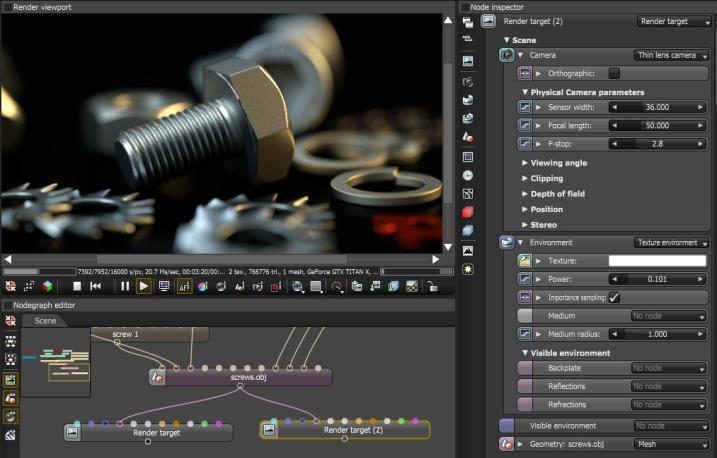
The Render Target is the node that is referenced as an output point for the rendered scene. It offers powerful flexibility especially when setting up advanced scenes as it hooks up to everything that forms part of the scene including the geometry, materials, environment, camera, and the render kernel. Multiple Render Targets allows for various scene configurations within the same file.
The Render Target node can be accessed by right-clicking in the Nodegraph Editor and choosing Render Target (Figure 1).

Figure 1: Use the Pop-up menu to add a Render Target node to the scene
The RenderTarget node provides the set of default parameters listed below. Each parameter has an associated pin for connecting appropriate nodes.

Figure 2: The input connections for the Render Target node
The Mesh node pin can accept geometry such as a polygon mesh (.obj), or an alembic scene (.abc). It can also accept geometry groups and instances.
The image resolution for each preview Render Target can be set through its Resolution node in the Node Inspector.
Each Render Target also has a default Kernel and this will be visible in the Node Inspector while that particular Render Target is selected. For more information regarding KernelsBy definition, this is the central or most important part of something. In Octane, the Kernels are the heart of the render engine., refer to the specific Kernel articles in the Rendering Overview section.
Appropriate node connections are shown below. Using specific nodes instead of simply adjusting the default Render Target parameters offers greater flexibility and customization (Figure 3).

Figure 3: Connecting nodes to the Render Target is a good way to customize the render output
The following examples illustrate how multiple Render Targets can be connected to the same scene. In the figure 4, the Render Target node is active and it has different F-stop, Environment Power, and camera placement than the second example shown in figure 5 where the Render Target (2) node is active.

Figure 4: The render preview shows the result generated when the first Render Target is selected

Figure 5: The render preview shows the result generated when the second Render Target is selected